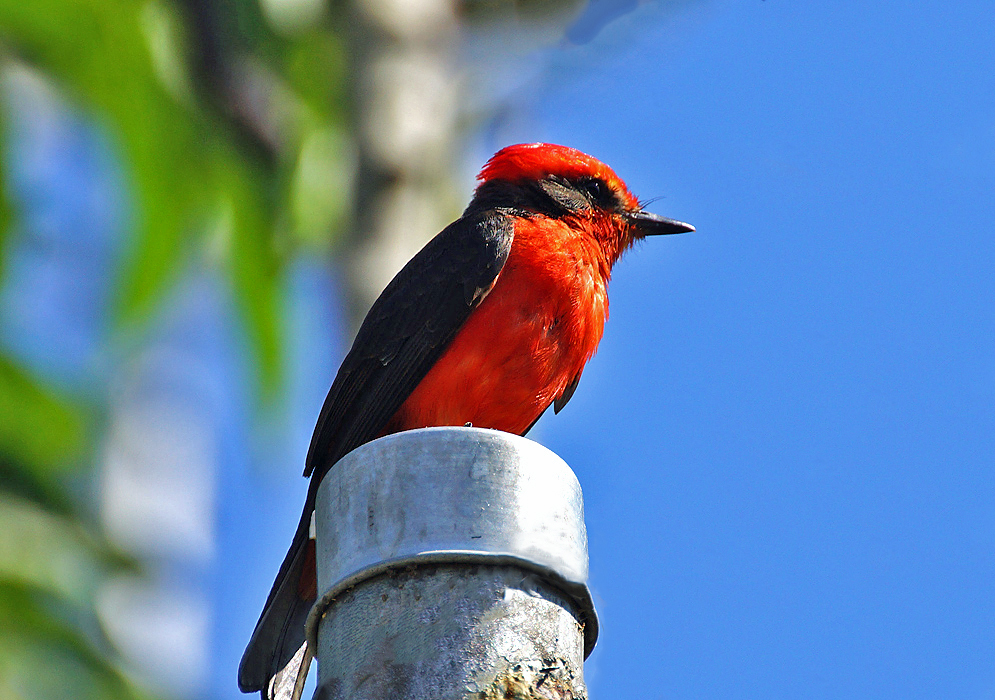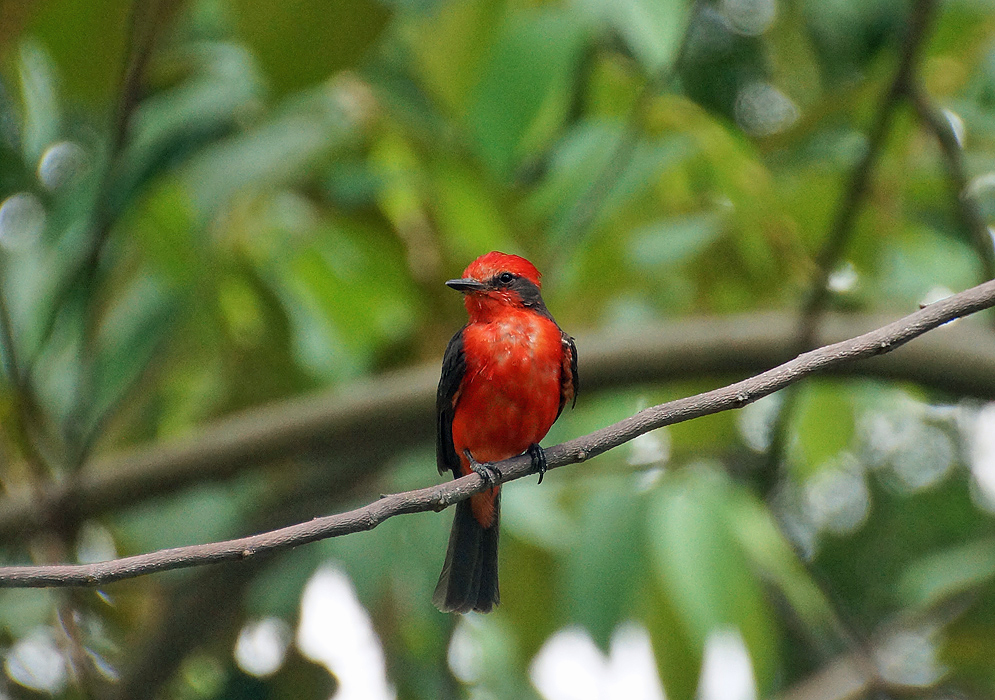This post has 11 Simple Fields-fields attached. Show fields.

The Vermilion Flycatcher, boasts a wide geographical range extending from the southwestern United States through Mexico and Central America, reaching as far south as Argentina. This species thrives in open habitats like arid scrubland, farmland, desert, savannah, cultivated lands, and riparian woodland. Adult male Vermilion Flycatchers are distinguished by their bright scarlet or vermilion color on their head and underparts, coupled with a dark-brown mask covering their face, ear-coverts, and nape of the neck. The tops of their wings and their tail are also blackish-brown. Females, on the other hand, exhibit a grayish-brown color on the top of their head, ear-coverts, wings, and tail, with their underparts being whitish but gradually becoming pale red. Both sexes preen frequently and are known to clean their bills on branches after feeding. Immature females resemble the adult females but with yellowish posterior underparts. Immature males initially look similar to adult females but eventually develop salmon pink or pale-orange red underparts. Vermilion Flycatchers are monogamous and exhibit unique mating behaviors. The males perform a Nest-Site-Showing Display, where they fly to potential nesting sites and emit a soliciting call to attract females. Their nests, constructed by the females, are made of twigs, grasses, fibers, and empty cocoons, lined with down, feathers, and hair. The clutch typically consists of 2-3 eggs, with the incubation period lasting about 13-15 days. Second broods are common in this species.The Vermilion Flycatcher has a relatively short lifespan in the wild of under 5 years. These birds are predominantly insectivorous, preying on flying and terrestrial insects such as grasshoppers, honeybees, beetles, and crickets. They exhibit a sit-and-wait hunting strategy, typically foraging close to the ground. The Vermilion Flycatcher is listed as of Least Concern by the IUCN Red List.



